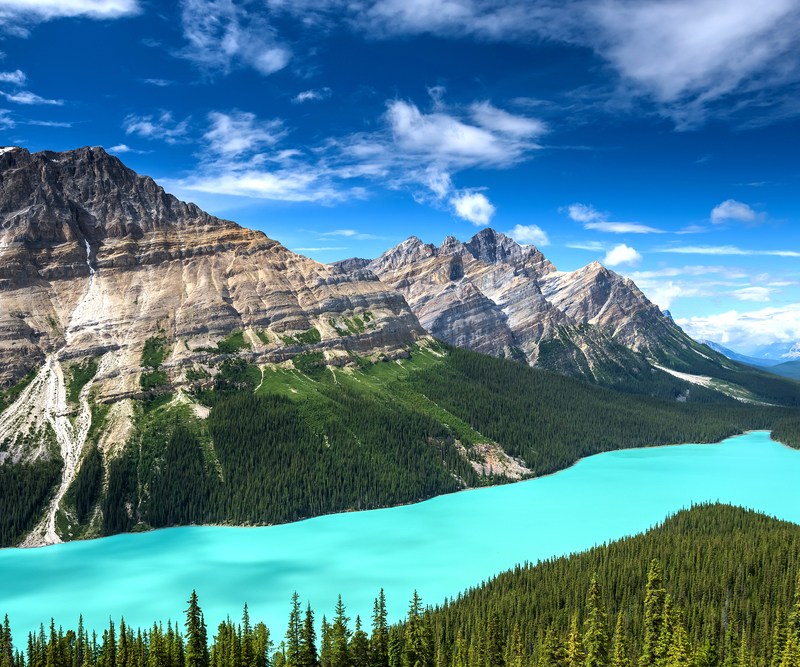
While there are lakes worth visiting all across North America, none are quite as strikingly bright and blue as Peyto Lake. Known for its incredible color, the lake looks straight out of a painting and is just as colorful in person as it is in photos.
Videos by TravelAwaits
Peyto is a natural freshwater lake spanning 346 acres, located in Alberta, Canada, in Banff National Park, surrounded by the park’s beautiful views and trails. Visitors find all of the park’s major tourist attractions, including Peyto Lake, by driving down Icefields Parkway, a long stretch of highway passing through the Canadian Rocky Mountains and considered one of the most scenic routes in the country.

While the lake water looks different depending on the season, the iconic shine and shimmer and beautiful turquoise color is a summertime result of melting glaciers. Early in the year, the lake will appear dark blue, but as heavy glacial melting begins, remnants of nearby glaciers enter the lake. The debris, known as rock flour, is made up of minerals such as quartz and calcite. These minerals enter the lake and alter its hue, and cause the light to glimmer off of the surface, resulting in the lake’s bright blue water.
Tourists in search of the lake should exit off of Icefields Parkway onto the Bow Summit, the highest point on the parkway and the best way to view this natural wonder. This leads to Peyto Lake Trail, a paved, family-friendly trail suitable for even beginner hikers. It is a mile and a half loop, populated with beautiful trees and mountainous views, with easy access to multiple Peyto Lake viewpoints.

Due to a combination of the beauty of the lake views and the easy accessibility of the trails, Peyto Lake is a popular tourist spot in the summer. There are regular tour buses throughout the day, and on the busiest of days, visitors may find themselves waiting in line to access a lookout spot. In order to get the most out of your visit, it is recommended that you try to avoid the crowds by visiting early in the morning or later in the day when tour buses are not actively running.
While the summer months are crowded, visiting in the winter should be reserved for skilled snowshoers and cross-country skiers, as the trails that are so easily accessed in the summertime become unusable in the winter months. Snow starts to fall, and it doesn’t leave until months later, covering entire paths and burying trail access points. Those who do snowshoe or cross-country ski to the lookouts must do so through a backcountry area, an activity recommended for experts only.

Editor’s Note: Want to get out in winter? See all our snowshoeing content here.
Peyto Lake has witnessed hundreds of thousands of visitors every year since its opening in 1941, and the Canadian government recently invested almost $3 million to renovate the infrastructure, parking lots, and facilities in the area. The lookout is currently closed so construction can be completed. The park is slated to reopen in August.
When the lookout does reopen, visitors will once again have the opportunity to witness the water’s striking shine and color. This unique, glacial-fed lake is a product of nature’s incredible work and a beautiful site. For additional inspiration, consider:
